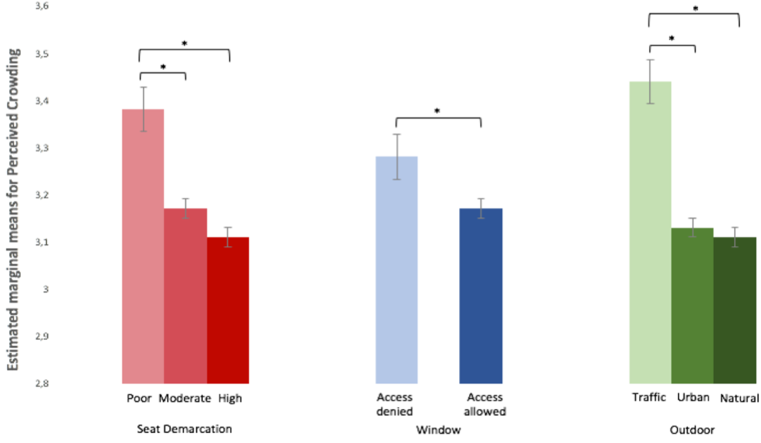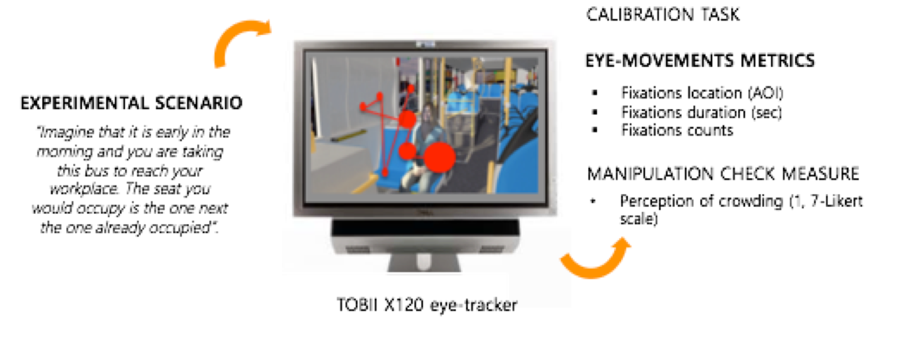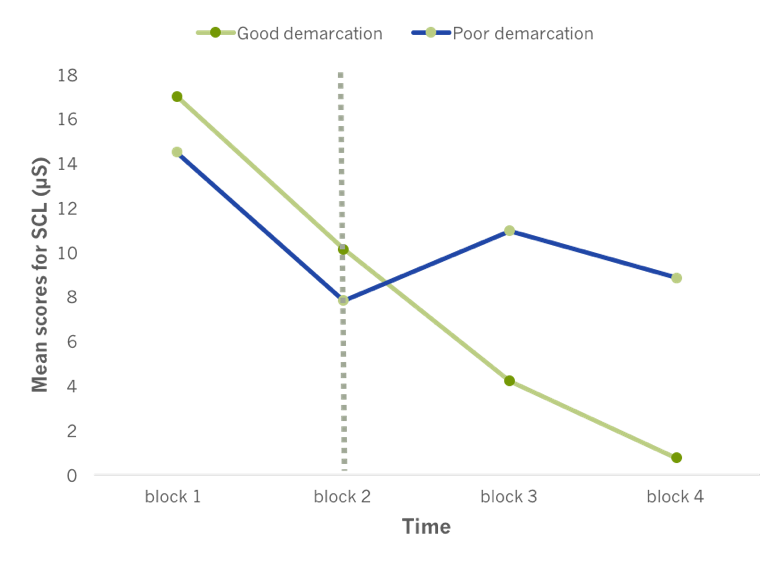- Milano
- Traffic Psychology Research Unity: mobility, safety and sustainability
- Research
- Themes
- Sustainability
Sustainability
Physical buffers of crowding on public transportation: Subjective experience and patterns of gaze behavior
In collaboration with the Faculty of Mechanical Engineering, Politecnico di Milano
| The work was designed to collect subjective emotional experience, perception of crowding and patterns of gaze behavior associated to distinct physical attributes of the vehicle setting (i.e., seat demarcation, type of window, quality of the outdoor surrounding), when a crowding scene is going on. We expected to verify whether each single physical attribute would play a buffering impact to crowding, in terms of both subjective evaluations and behavioral changes. Two experimental studies were conducted to meet this purpose. In Study 1, eighty participants (m = 36; f = 44) aged 23.71 (SD = 3.29) were asked to rate perceived pleasantness, arousal, dominance, and crowding associated to 18 ad hoc images depicting crowded condition on an ordinary bus, and generated by the combinations of Seat Demarcation (3) x Type of Window (2) x Outdoor Surrounding. In Study 2, eye movements from twenty-four participants (m = 9, f = 15) aged 25.7 (SD = 1.98) associated to significant AOI (i.e., the passenger, seat demarcation, main window, and rear windows) in the same stimuli (N=18) were recorded. Results confirmed the protective role play by each one of three physical components examined: having a slightly seat demarcation would be enough to determine significant increase in the quality of the experience, in terms of dominance and crowding; additionally, when the outdoor surrounding is a rural landscape or a pleasant urban plaza the quality of experience would increase compared to when the external scenario is a traffic congestion, for all of the examined self-reported dimensions. Results from Study 2 found a pattern of compensatory effect between the interior and the outdoor physical attributes of the mass transportation setting: when one attribute is poor (e.g., traffic congestion in the outdoor surrounding), participants engaged more attention on the well-arranged attributes in the scene (e.g., a well-arranged seat demarcation). These findings highlight the role played by the outdoor surrounding in moderating the impact of interior design on passengers’ experience. Rethinking the spatial organization of public transportation vehicle, and so, considering the interaction between the interior and the outdoor physical attributes to shape passengers’ experience, would be a relevant implementation for both academics and mass-transportation designers. | |
 |
 |
Concurrent and after effects of well-supportive attributes of the bus interior design during a crowded journey: multi-methodological data and immersive virtual environments
In collaboration with the Faculty of Mechanical Engineering, Politecnico di Milano
|
The study aimed to quantify both the concurrent and the after effects of the exposure to a short-term crowding- episode in a well-supportive indoor physical setting on a bus, in order to estimate the impact of well-suited physical environment on health and emotional well-being. 40 participants were asked to simulate a 10 minutes-journey on a bus in immersive virtual environments, while multi-methodological data were collected (i.e., subjective measures, physiological responses, and cognitive performance). The subjects were randomly assigned to one of the three experimental conditions, where social density and the presence of well-suited physical elements were manipulated. Results revealed that experiencing a short episode of crowding on the bus (i.e., 10 min.) is sufficient to determine a significant increase in physiological activation (i.e., SCL) as well as to decrease the passengers’ quality of post-exposure experience (i.e., perceived stress); and that providing a well-designed setting layout significantly buffers the aversive consequences of commuting crowding. Mixed results were obtained regarding the low-density condition, in terms of concurrent sympathetic responses (i.e., SCL), and post-exposure cognitive performance (i.e., Color Stroop Task); future research will be needed to untangle these findings. Investigating the direct effects of crowding on human health and well-being, and quantifying the impact of adopting effective coping strategies supported by the physical setting on optimum functioning are crucial issues to be addressed, due to their important implications for both research and practice on healthy environments. |
|
 |
 |
